
Villa is a genus of flies belonging to the bee-fly family (Bombyliidae). They range in size from 5 to 17 millimetres, and have typically rounded heads. The males of some species have a brilliant mat of silvery patagial scales. About 270 Villa species are found on all continents except Antarctica. They can be distinguished from similar genera (Hemipenthes) by their wing venation.
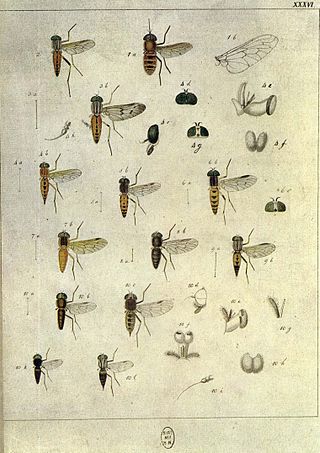
Pangonius is a genus within the horse-fly family (Tabanidae), often misspelled as Pangonia; Latreille originally published the name as Pangonius in 1802, emending it in 1804 to Pangonia, but the emendation is not valid under the International Code of Zoological Nomenclature. Some species that were earlier placed in this genus are now in the genus Philoliche.

Rhamphomyia sulcata is a species of dance flies, in the fly family Empididae. It is included in the subgenus Rhamphomyia. It is found in most of Europe, except the Balkan Peninsula.
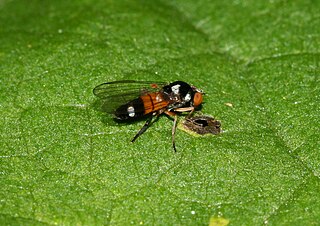
Callomyia is a genus of flies in the family Platypezidae. Some species can be found in Belgium.

Callomyia elegans is a species of fly in the genus Callomyia found in Europe.

Compsilura is a genus of tachinid flies in the family Tachinidae from Mozambique, Malawi and South Africa.

Hybos culiciformis, common name dance fly, is a species of fly belonging to the family hybotid.
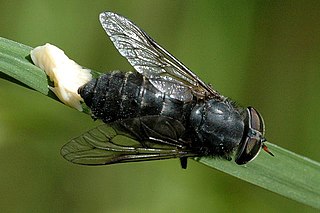
Hybomitra micans is a species of horse flies in the family Tabanidae.
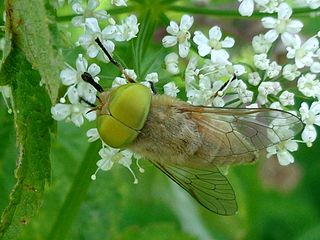
Atylotus fulvus is a species of 'horse flies' belonging to the family Tabanidae.
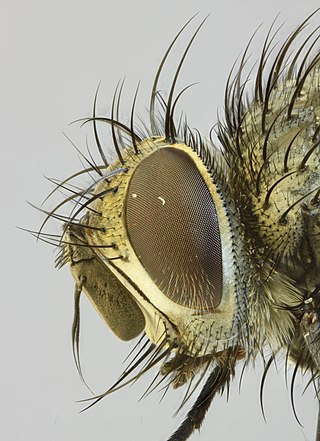
Phryxe nemea is a species of fly in the family Tachinidae.

Platypalpus luteus is a species of fly in the family Hybotidae. It is found in the Palearctic.
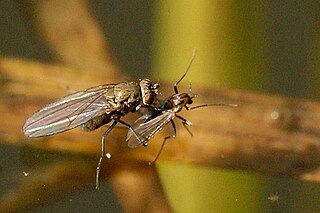
Notiphila riparia is a species of fly in the family Ephydridae. It is found in the Palearctic . jizz-Face often grey white, rarely yellow. May–September, - Common on water edge vegetation(pools and streams). All Europe.Urals.Near East.
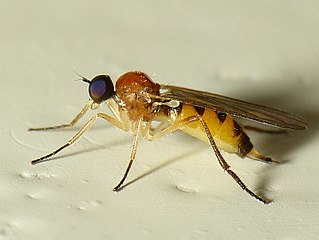
Leptopeza flavipes is a species of fly in the family Hybotidae. It is found in the Palearctic.

Xylophagus is a genus of flies in the family Xylophagidae.

Villa cingulata is a Palearctic species of bee fly in the family Bombyliidae.

Paraplatypeza is a genus of flat-footed flies in the family Platypezidae.

Paraplatypeza atra is a species of fly in the genus Paraplatypeza.
Ulomyia is a genus of flies belonging to the family Psychodidae.
Tachypeza is a genus of flies in the family Hybotidae.

Chrysopsini is a tribe of horse and deer flies in the family Tabanidae.


















